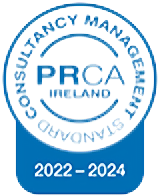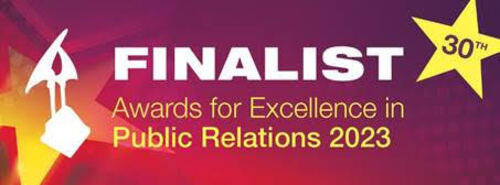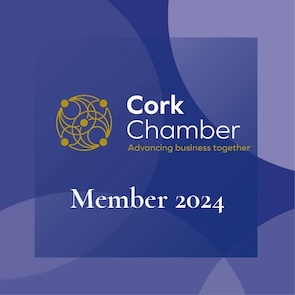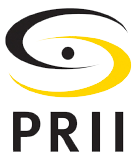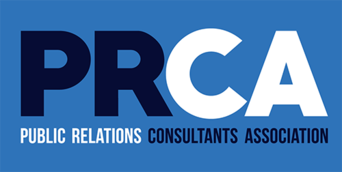The importance of timing and accuracy in a crisis
The importance of timing and accuracy in a crisis
Managing crisis communications during the Manx2 incident at Cork Airport

Communications has quickly become an important part of every organisation’s management function. In fact, according to the Public Relations Institute of Ireland’s (PRII) 2019 industry census, the public relations sector contributes almost €1.2 billion to the Irish economy. Quality communications, both internal and external, are no longer a luxury, but a requirement for successful business practice. In situations where uncertainty prevails, this especially holds true.
With over thirty years of experience in the communications industry, CEO and founder of AM O’Sullivan PR, Ann-Marie O’Sullivan, is no stranger to communicating on behalf of clients at times of crisis. “There’s a value to getting communications right. In times of crisis, it’s important to take time to consider what your message is, and how you want your audience to hear it. Some messages are not easy to impart, but there’s a professional satisfaction in knowing that you did the job right.
When you’re working in an agency, PR is all about client ethos. We have a national reputation in emergency management and business continuity. We’re on 24/7 call for a number of our clients. We’re called in at any time if an emergency plan is activated,” said Ann-Marie.
With client relationships spanning over 30 years, Ann-Marie often communicates complex messages. “Where consequences hugely effect employees, they must be kept front of mind and should always be the first to hear the news. It’s not always easy, but the strategic value of communications has become so important to organisations, particularly in the context of crises.”
As the only non-Dublin based member of the PRCA, Ann-Marie recognises that today’s climate allows businesses to operate from any part of the country. “You don’t have to be based in Dublin to provide a quality service. Particularly now in the age of technology. Now it’s possible to be in contact with your clients instantaneously regardless of where you are.”
Regardless of location, organisations must also ensure that appropriate communications procedures are in place to manage issues and handle crisis situations, especially in the age of digital. Ann-Marie advised that “Media is always on. Because of social media, each of us is now a journalist. That’s why, in crisis, you must take time to ask yourself ‘what is the message we want to share? Who do we want to hear it? How do we reach our target audience?’.”
One such crisis that proved both the fast nature of media responses and the importance of a crisis communications strategy was the Manx2 Flight 7100 incident at Cork Airport.
On February 10, 2011, a Manx2 commuter plane with two crew and ten passengers left Belfast Airport at 8:10hrs, before heading south to Cork some 250 miles away. There was very heavy fog on the day. The pilot tried three times to land, and on the third attempt the aircraft crashed and came to rest 189m from its initial point of contact with the runway surface. Fire occurred in both engines.
At 9:52, an alarm sounded in the Cork Airport Fire Station. The fires in the plane were extinguished four minutes later. Two flight crew and four passengers were fatally injured. However, six passengers were rescued and brought to the hospital. The Cork Airport Emergency Plan was activated.

“The first media call came into my mobile from the Irish Examiner at 9:59, 3 minutes after the incident,” said Ann-Marie. “The Irish Examiner had received a query about the crash from a taxi driver who was sitting outside the terminal at Cork Airport and they contacted me to find out what was going on. From that moment onwards, and for the next 36 hours, we had unrelenting media pressure.”
RTÉ, TV3, TG4 and UTV all reported live from Cork Airport. Significant global media outlets, including Sky News, CNN, Fox News, Channel News Asia and ABC News also reported on the incident. Ann-Marie and her team had to act quickly to ensure that all media outlets and stakeholders were informed without delay.
The unpredictable nature of crisis communications and the fast pace of media news outlets can have its challenges and, in this situation, a duty manager of the airport, who was off that day, was walking down Oliver Plunkett Street, Cork, when he saw television footage of the Airport in the windows of O’Callaghan’s Electrical Store, a big TV shop, on CNN at 10:20am. Somebody had taken a photograph on their mobile phone and sent it to CNN. That was the first he knew about it.
“We looked after the media piece. It was all about trying to manage the flow of information, trying to handle as many questions as possible, trying to be supportive of the management team at Cork Airport, and, at the same time, trying to deal with the barrage of calls that were coming in at that time,” continued Ann-Marie.
“In a situation like this, you can’t speculate. We endeavoured to make sure that we had all of the factual information. It was important for us to identify what information we had, and what could be provided to the media and the general public. If you don’t have all necessary information, you can’t communicate it to the public. In an evolving situation like this, it’s important to let the media know that you will revert to them with information as soon as possible.”
Ann-Marie and the team set up a media centre on site providing the opportunity for the team to be among the media, to talk to them and to be available to them. “When a crisis of this scale arises, the communications team has to work together to ensure that they are a conduit to provide material directly to the media as required. The media have their own requirements, and it’s important to be aware of that.”
The crisis communications team also managed visits to Cork Airport from An Taoiseach Brian Cowen TD, Micheál Martin TD and British Ambassador Julian King on 10 February, visits from the families of those who had passed away, as well as the funerals which followed days later. In March, the preliminary accident report of the Air Accident Investigation Unit Ireland was published. That month, an Ecumenical Memorial Service also took place at Cork’s North Cathedral.

Crises inevitably have the ability to damage any organisation, regardless of size and existing reputation. To minimise their harmful impact on an organisation and its publics, clear communications is imperative. In the case of the Manx2 incident at Cork Airport, the 24/7 availability of a communications team ensured that the media, and in turn the general public, were provided with factual, accurate information at all times. In times of crisis, clear, planned communications remove the capacity for speculation about sensitive events, ensuring that all stakeholders are provided with essential, accurate information as promptly as possible.


